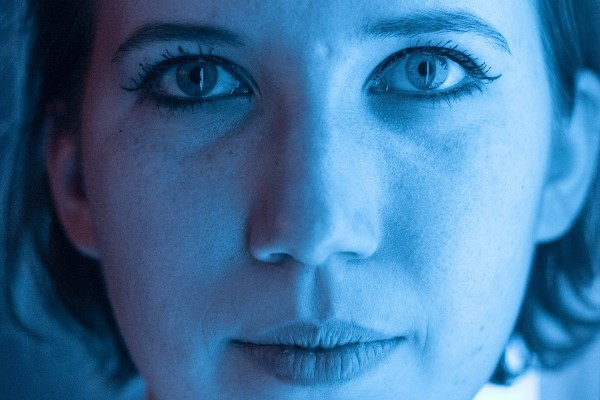Poet Maria Jastrzẹbska’s most recent collaboration, Snow Q – a reimagining of Hans Christian Andersen’s Snow Queen – finishes it’s UK tour at The Spire in Brighton this Saturday. Here she shares how the show came about and what it means to her.
Snow Q is something else. I mean it’s really something else, literally in the sense that I don’t know anyone else doing anything quite like it. It’s an artist-led project and it’s Polish led. Central/Eastern European work is so under-represented in the art/literature world in the UK and being a lesbian myself I have also totally queered it.
So what is it? Snow Q is a collaborative project combining words, music and visuals, re-imagining Hans Christian Andersen’s story of The Snow Queen to explore contemporary themes of social isolation, gender, sexuality, migration and exile, which we did in a big installation at Winter Solstice in 2018.
This year’s version is a live literature production with text by myself, performed by Rita Suszek and Maria Ziółkowska, written in the extraordinary hybrid language of Ponglish (half-English/half-Polish). My poems are in the voices of three characters: Gerda and Kai – two young people, identifying as non-binary, who slip effortlessly between Polish and English – and the showy trickster, multi-lingual crone Crow. Three film poems made by Wendy Pye run alongside this production, which includes music by Peter Copley.
I’ve never fitted into a binary world myself so it made sense to me to have characters who don’t. I wrote about this recently in a blog, explaining that intergenerational communication is really important to me, perhaps because it was so hard for me to communicate with the generation before mine when I was growing up and also, since I’m passionate about language, I’m interested in the different ways older and younger people talk about the world.
Younger people are also challenging preconceptions about gender. They’re using words like ‘non-binary’, which reminds me of my experience but I wanted to hear how they see it so I asked some friends.
When we first researched the project we worked with the Young Carers’ group in Brighton and also the Older & Out LGBTQ+ group. Many of the younger queer people I know identify as gender fluid, gender-queer, non-binary etc. My generation uses different words perhaps – and language changes all the time anyway. At the end of the day we’re all trying to change a world that’s full of hatred and injustice. I still get mistaken for a man regularly.
In the original story by Hans Christian Andersen the friendship at the heart of it is between a girl and a boy. I like that Andersen made the girl a strong character but it seems likely to me that today she/they would identify differently, as would Kai, the young person lost in the snow and ice. The third character, Crow, is a very old character so you have intergenerational communication right through the poems.
queer writing south
Maria started Queer Writing South with fellow poet John McCullough to promote queer writing “many moons ago”, running workshops to generate new writing, producing an anthology, Whoosh!, and putting on events with local and national queer writers. Maria says: “Currently it exists as a loose network and we have a Facebook page. If anyone would like to take it over and run it we’d be thrilled. We were recently involved in the wonderful and highly successful Coast Is Queer Festival in Brighton.”
more info
See Snow Q in February at: London (Fri 21); The Spire, Brighton (Sat 22). Tickets or more info here:
www.snowqproject.wordpress.com

















You must be logged in to post a comment.